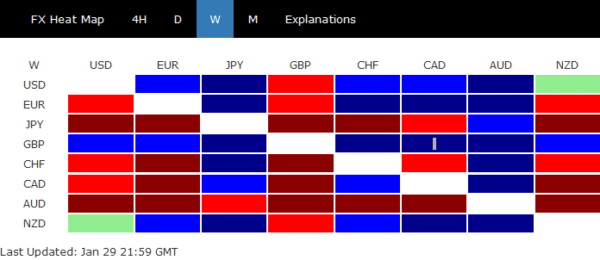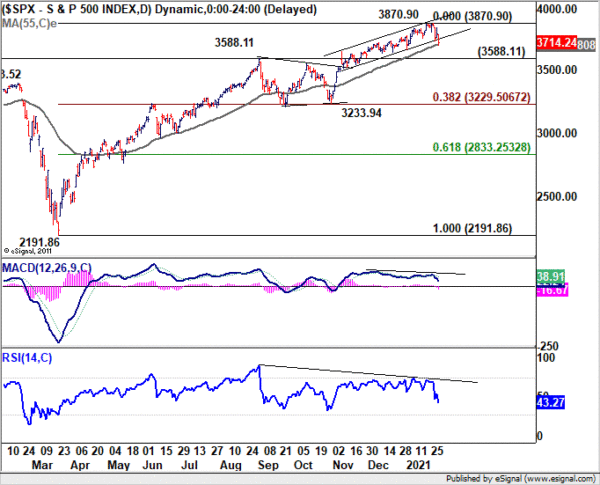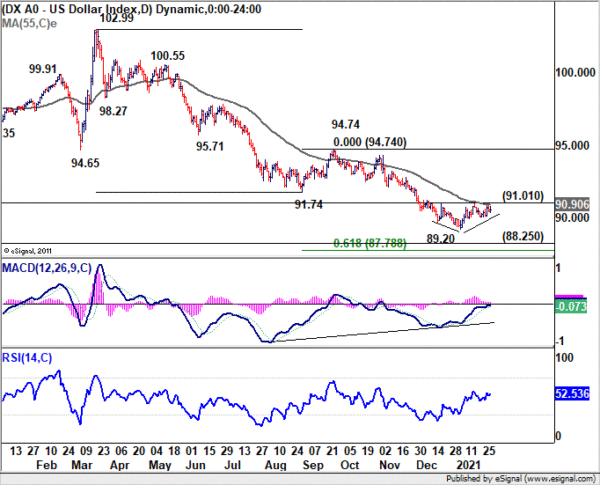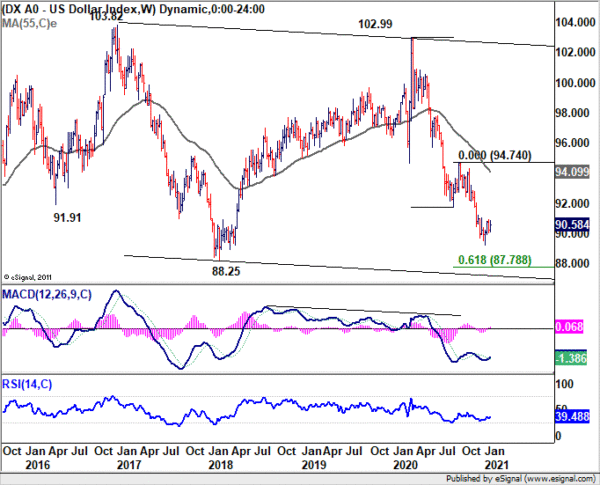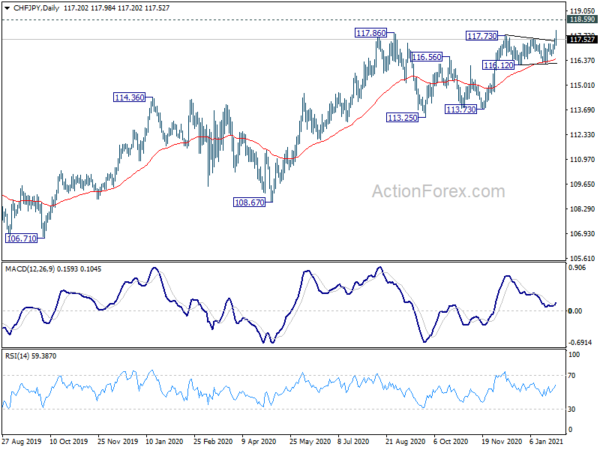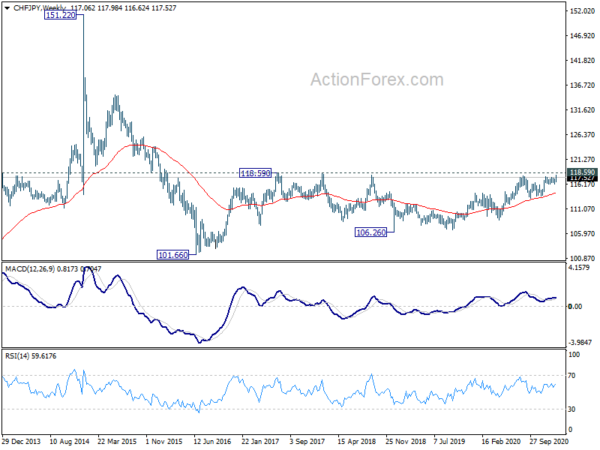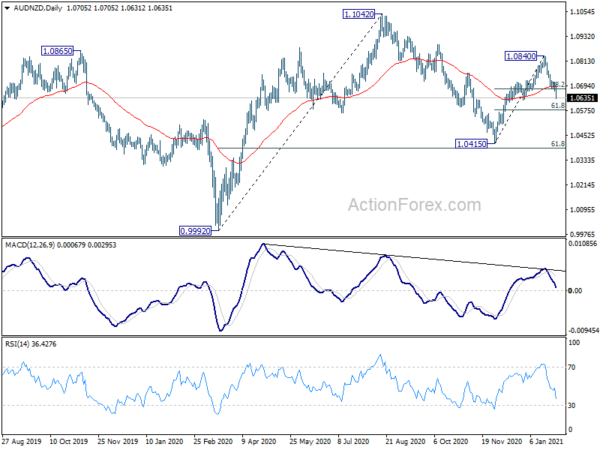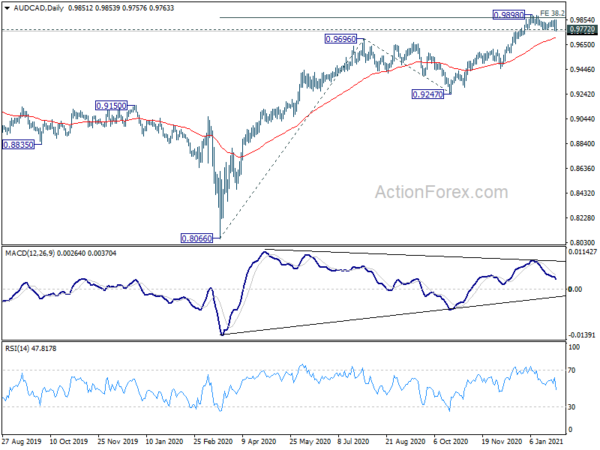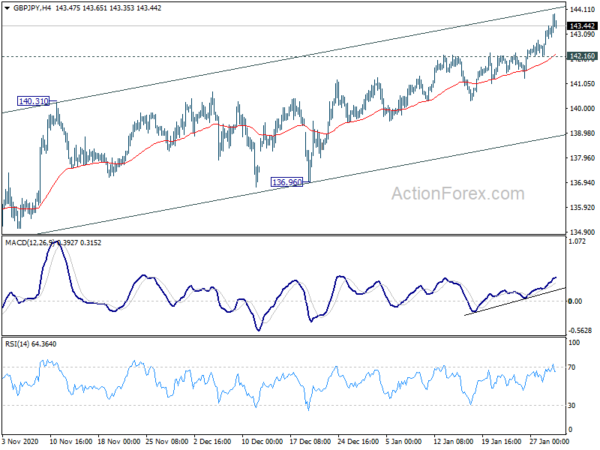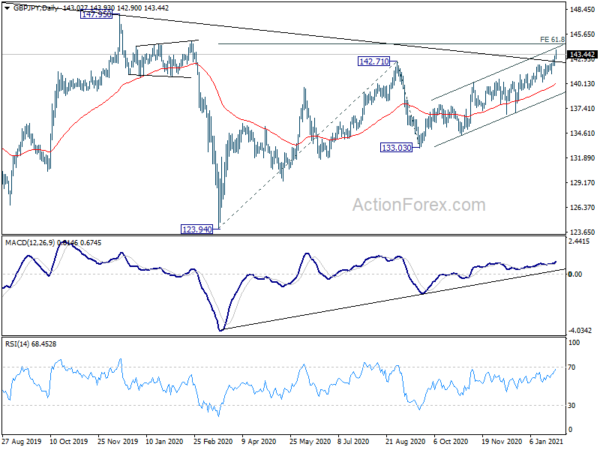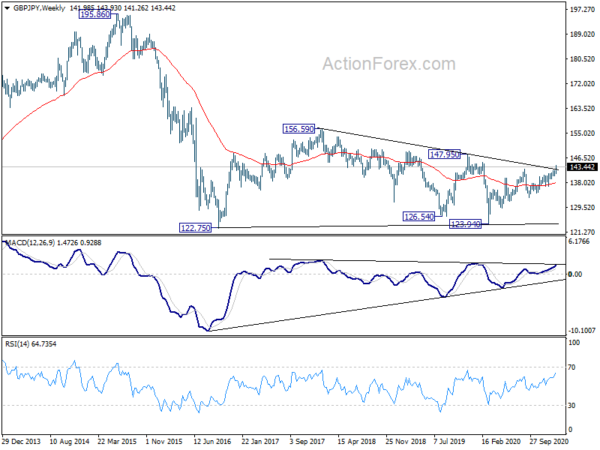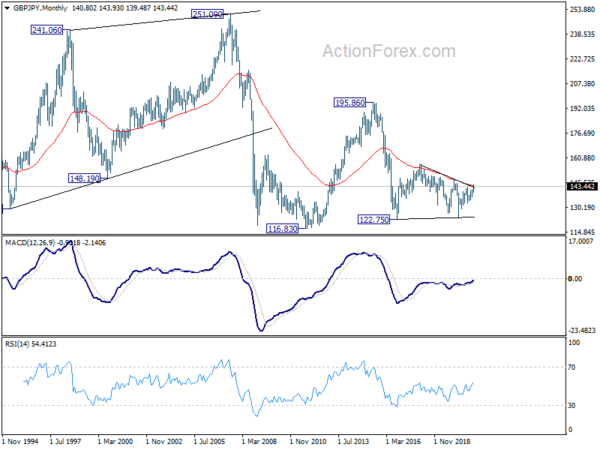January ended with an exceptionally volatility week. While GME occupied a lot of headlines, there were other important developments like vaccines, US stimulus, and central bank expectations. Sterling ended as the strongest one with traders paring bets on negative interest rate of BoE. The same went for New Zealand Dollar too, which ended as second strongest.
Dollar did closed up against most major currencies but the upside was capped, thanks to the resilient Euro. Australian Dollar ended as worst performing while Canadian Dollar was saved by stronger than expected GDP data. Yen was surprisingly the second worst performing, despite late risk aversion.
Overall, it will take a little more time to see if the selloff in stocks could turn into a larger scale correction. Dollar would also need to break through some key levels to solidify its bullish reversal.
S& 500 broke channel support on short squeeze, stimulus and vaccines
Headline grabbing stories of the high profile short squeeze of GamesStop and AMC Entertainment raise concerns that hedge funds would need to liquidate their long positions to cover up the losses on the battle with individual traders. Separately, they are skepticisms over US President Joe Biden’s push to fast track his US 1.9 trillion proposal. But these negative factors for stocks should be relatively temporary.
The bigger concerns is the question of whether we’re really finally near to the end of the coronavirus pandemic. Johnson & Johnson said, in a trial of over 40k volunteers, its single dose vaccine was only 72 effect for Americans, 66% for Latin Americans, and 57% with South Africans. The effectiveness of the vaccine against the South African variant of the coronavirus is in question.
The break of near term channel support in S&P 500 is a bearish sign. 3870.90 should at least be a short term top. Reaction from 55 day EMA (now at 3695.89) is the immediate focus. Rebound from current level would revive near term bullishness, for resuming the record run sooner rather than later. But firm break of the 55 day EMA would put focus on 3588.11 resistance turned support. Firm break there should indicate that SPX has already started a medium term correction.
Dollar index needs to break 91.01 resistance to confirm head and shoulder bottom
While Dollar closed up against most major currencies last week, Dollar index’s performance was somewhat disappointing, mainly due to resilience in Euro. A head and shoulder bottom could be in the making in DXY, but it has to break through 91.01 resistance, as well as 55 day EMA (now at 90.09), to confirm near term reversal. In that case, DXY should at least be correcting the down trend from 102.99 to 89.20. Stronger rise would be seen to 55 week EMA (now at 94.09).
However, rejection by 91.01 will bring another fall in DXY through 89.20. In that case, DXY would target 61.8% projection of 102.99 to 91.74 from 94.74 at 87.78 before bottoming.
CHF/JPY attempting upside breakout, but faces strong 118.59 resistance
Another development to note was selloff in Yen despite risk aversion. That’s clearly reflected in the upside breakout in CHF/JPY, which took it to 117.98 before closing at 115.52. Still 118.59 resistance would remain a significant level to overcome. Rejection by the resistance could mark the come back in Yen. But sustained break there would carry larger bearish implication in Yen, which could be reflected in stronger rally in USD/JPY towards 106 handle.
AUD underperforms NZD and CAD in current risk-off markets
Australian Dollar was clearly the worst performing one among the commodity currencies, suffering most along with risk selloffs. AUD/NZD’s decline from 1.0840 accelerated downwards with strong break of 55 day EMA and 38.2% retracement of 1.0415 to 1.0840 at 1.0678. Deeper fall would be seen to 61.8% retracement at 1.0577 for the near term. There are various interpretation on the price actions from 1.1042 high. The current downside acceleration raises the odds that fall from 1.0840 would extend through 1.0415 support.
AUD/CAD’s break of 0.9772 support indicates rejection by 38.2% projection of 0.8066 to 0.9696 from 0.9247 at 0.9870. Deeper pull back is likely for the near term to 55 day EMA (now at 0.9706). Overall outlook isn’t too bearish yet. Strong support from 55 day EMA would keep the up trend form 0.8066 intact and bring another high at a later stage. But sustained break of 55 day EMA would open up deeper decline towards 0.9247 support.
GBP/JPY Weekly Outlook
GBP/JPY rose to as high as 143.93 last week and break of 142.71 resistance indicates resumption of whole rise from 123.94. Initial bias stays on the upside this week for 61.8% projection of 123.94 to 142.71 from 133.03 at 144.62 first. Break will target 147.95 medium term structural resistance. On the downside, below 142.16 minor support will turn intraday bias neutral and bring consolidations, before staging another rally.
In the bigger picture, rise of 123.94 is still as the third leg of the sideway pattern from 122.75 (2016 low). Break of 147.95 will target 156.59 resistance (2018 high). On the downside, break of 133.03 support is needed to confirm completion of the rise from 123.94. Otherwise, further rise will remain in favor even in case of pull back.
In the longer term picture, price actions from 122.75 (2016 low) is still seen as a sideway pattern for now. Sustained break of 55 month EMA (now at 143.73) will carry long term bullish implications. But still, firm break of 156.59 resistance is needed to confirm the start of an up trend. Otherwise, overall outlook will be neutral at best first.




